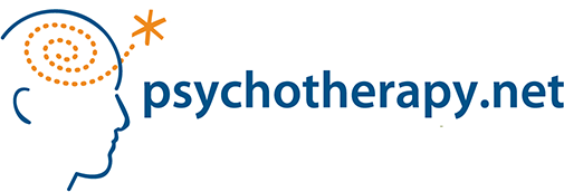What does it mean to truly embrace the journey of families made by adoption? This question has both intense personal and professional significance for me. I am both an adoptive parent of BIPOC children and a play therapist who has taken the journey with many adoptive families as my practice has moved into the worlds of complex trauma and attachment issues. Adoption has long been seen as a solution—the miracle, that solves the problem of child abuse, neglect, and abandonment. During the era in which my husband and I were building a family, it was our solution to pregnancy loss and challenges to fertility. The miracle version of the story has inspirational, even profoundly spiritual overtones in many families. The idea of bringing together caring adults who want to be parents with children who have lost the care of their first parents through some version of tragedy and harm is an inspirational narrative. To the degree that it replaced the secrecy and shame of earlier decades’ approach to child placement and adoption, or overtaxed, harmful group institutional care, it represents a significant step forward in the lives of children and families.
Thanks to Bessel van der Kolk and others, we are increasingly aware of the importance of somatic memories built implicitly in the earliest months of life, even in utero. When the preverbal or early in life trauma experiences compound with attachment loss and disruption, it make the realities of emotional and behavioral regulation deeply challenging. Parents, like myself, struggle to respond adequately to a day-to-day reality quite different from “the happily ever” after version of the adoption miracle story.
In this space, a trauma and attachment-focused play therapist who enters the family system can have such a profound impact. We have to be ready to challenge the miracle narrative and, in its place, use the best clinical tools we have to help the child feel supported in the unfolding of their own true and three-dimensional story. This story includes a recognition of the emotional, and often cultural, dislocation and disruption that is at the core of this adopted child’s life journey.
It also must address an understanding of the messages from the most fragmented parts of the self that are communicated through the body. Attempts to deny, dress up, or over-soothe these losses and disruptions can land badly. When loss and adversity are left unprocessed and unresolved, this can lead to the intense emotional dysregulation some children display, and for others, can lead to a ticking time bomb for a crisis of worthiness, belonging, and the capacity to form deeply satisfying attachments over the life span.
For children with multiple disruptions as they moved through the foster care system, the complicated wounds to their attachment exact a painful and complex cost, as there are so many missed opportunities for adults to keep their part of the attachment bargain—that every little human born into the world deserves to have their basic needs met, to be enjoyed and nurtured. By the time the adoption happens, these forever caregivers may have a lot to prove and the negative energy they get from the child is the cumulative effect of others’ failures.
Many of my clients’ parents with whom I’ve worked have despaired that their efforts to connect with, and shape, the behavior of their dysregulartd and insecurely attached adoptive child(ren) are met with rage and rejection, instead of responsiveness. Often, I have felt those impulses as well, during struggles to make the child’s response make sense in a cause-and-effect, logical consequence version of the parent-child relationship. For a child who missed out on the basic building blocks of the serve and return part of secure attachment, consequences are perceived as threats, and may work to grow the most defensive and rageful parts of the child’ personality.
Why does this happen? So often the impulse to spare children the hard parts of their own story or soothe away uncomfortable information leads to a real phobia of their own child’s distress and the resulting failure of mentalization. The answer to this challenge is for therapist—and the adoptive parent—to help the child make sense of their story, including the hard parts; expand the family system’s capacity to hold the distress without minimizing it, and do this work with the parent as an active participant, with support from the therapist.
In attempting to teach a group of clinicians about weaving together of all the things that seem important in therapy with families, I came up with the metaphor of the layer cake. Play therapy, trauma/attachment work, dissociation theory/parts work and family therapy are all a part of this multi-layered work, even as we try to help our clients eat the “whole thing,” bite by bite.
I think of my work with a child who was adopted from an orphanage in the developing world as a preschooler, and the complicated, but beautiful layers of how the therapy unfolded for him a few years after his adoption in the US.
Play Therapy Layers
Like many children, offering open and child-centered play in the playroom, led to the emergence of post traumatic play narratives, giving clues or hints to the preverbal experiences. One example was many narratives around characters fighting over scarce resources, as well as abandonment stories played out with dinosaurs, video game characters, and superheroes.
Dissociation/Parts-Work Layer
Dissociation is the infant/child’s solution to the unbearable threat of betrayal by the original caregiver whether through overt abuse, neglect, sexual exploitation, or attachment loss. To fragment and isolate that chain of painful associations and emotional/somatic stress is a very adaptive way to cope. By the time this child entered therapy, these dissociative patterns had resulted in some fragmentation, including rageful episodes and “baby” parts who were almost incapable of receiving soothing from the parent. The parent admitted to a lot of dysregulation herself in the early months after placement and compounded the effect with threats, yelling, spanking. It was clear that we needed to playfully befriend these dissociated parts through some expressive work. Using a lot of drawing and flexible sand tray creations, we involved the parent experientially in play scenarios apologizing to the hurt parts of the child that she had frightened.
The EMDR/Trauma Protocols Layers
Bridging from trauma content held implicitly in play into first person narrative work, while staying grounded in the present is a tricky business. I used a flexible and playful approach to adding EMDR processing in the playroom for short periods, especially when the adoptive parent was able to support and bear witness to that work. This often served an additional purpose of shifting angry and embittered caregivers into empowered and compassionate ones.
As they come to see their child’s story through their eyes, it increased their reflective capacity and attunement. This parent struggled at times with her own impulse to soothe—she and I talked of her desire to “put a bow on it” and keep the child from feeling the intensity of his losses and rejection as he grew older, and became more aware by following my lead in the playful EMDR sessions.
Anti-Racist, Anti-Bias Icing on the Cake
This is an area of great challenge for adoptive parents who may have limited experience with the day-to-day realities of being Black or Brown, especially in the White majority spaces where many adoptive kids are growing up. In this case, the parent had really minimized the impact of cultural dislocation for her child, but as I insisted on broaching the subject directly, we discovered a lot of distress for him around looking different from her, navigating racial/cultural groups of peers, and as we began to work through the hard parts of his own story, anger at the birth country for “throwing away children” arose.
Permission to feel big feelings was needed throughout that work, and collateral work with the parent on her own biases and perceived need to soothe and minimize these experiences of microaggressions was crucial. Given the polarization and negative narratives in the wider culture, this work will likely be ongoing throughout his development, but the work so far has helped them both to have a framework in which to stick together, and build the parent’s capacity to move past the “miracle” of coming together into the power of growing together through adversity.
File under: Musings and Reflections, Child & Adolescent Therapy
Beyond Happily Ever After
Despite being a child mental health professional, I was not well prepared as a parent for the “what’s next” part of the adoption journey. However, neither was I alone. Many of the families that I have come to work with over the years have struggled to balance their own “miracle” language with the realities of the trauma and attachment loss for the child, even when placement and adoption occur early in life, before the so-called “age of memory.”Thanks to Bessel van der Kolk and others, we are increasingly aware of the importance of somatic memories built implicitly in the earliest months of life, even in utero. When the preverbal or early in life trauma experiences compound with attachment loss and disruption, it make the realities of emotional and behavioral regulation deeply challenging. Parents, like myself, struggle to respond adequately to a day-to-day reality quite different from “the happily ever” after version of the adoption miracle story.
In this space, a trauma and attachment-focused play therapist who enters the family system can have such a profound impact. We have to be ready to challenge the miracle narrative and, in its place, use the best clinical tools we have to help the child feel supported in the unfolding of their own true and three-dimensional story. This story includes a recognition of the emotional, and often cultural, dislocation and disruption that is at the core of this adopted child’s life journey.
It also must address an understanding of the messages from the most fragmented parts of the self that are communicated through the body. Attempts to deny, dress up, or over-soothe these losses and disruptions can land badly. When loss and adversity are left unprocessed and unresolved, this can lead to the intense emotional dysregulation some children display, and for others, can lead to a ticking time bomb for a crisis of worthiness, belonging, and the capacity to form deeply satisfying attachments over the life span.
For children with multiple disruptions as they moved through the foster care system, the complicated wounds to their attachment exact a painful and complex cost, as there are so many missed opportunities for adults to keep their part of the attachment bargain—that every little human born into the world deserves to have their basic needs met, to be enjoyed and nurtured. By the time the adoption happens, these forever caregivers may have a lot to prove and the negative energy they get from the child is the cumulative effect of others’ failures.
Many of my clients’ parents with whom I’ve worked have despaired that their efforts to connect with, and shape, the behavior of their dysregulartd and insecurely attached adoptive child(ren) are met with rage and rejection, instead of responsiveness. Often, I have felt those impulses as well, during struggles to make the child’s response make sense in a cause-and-effect, logical consequence version of the parent-child relationship. For a child who missed out on the basic building blocks of the serve and return part of secure attachment, consequences are perceived as threats, and may work to grow the most defensive and rageful parts of the child’ personality.
A Layer Cake Metaphor for Adoption-Based Therapy
One of the attachment concepts I find so useful in these moments is based on the notion of mentalization, and the ability of caregivers to create and sustain an attuned mental map of what is going on inside the child. Peter Fonagy and others have been writing for many years about mentalization and the impact on reflective functioning in the attachment between parents and children. In my own experiences, I have come to realize that clinging to the “miracle” narrative can sabotage mentalization.Why does this happen? So often the impulse to spare children the hard parts of their own story or soothe away uncomfortable information leads to a real phobia of their own child’s distress and the resulting failure of mentalization. The answer to this challenge is for therapist—and the adoptive parent—to help the child make sense of their story, including the hard parts; expand the family system’s capacity to hold the distress without minimizing it, and do this work with the parent as an active participant, with support from the therapist.
In attempting to teach a group of clinicians about weaving together of all the things that seem important in therapy with families, I came up with the metaphor of the layer cake. Play therapy, trauma/attachment work, dissociation theory/parts work and family therapy are all a part of this multi-layered work, even as we try to help our clients eat the “whole thing,” bite by bite.
I think of my work with a child who was adopted from an orphanage in the developing world as a preschooler, and the complicated, but beautiful layers of how the therapy unfolded for him a few years after his adoption in the US.
Play Therapy Layers
Like many children, offering open and child-centered play in the playroom, led to the emergence of post traumatic play narratives, giving clues or hints to the preverbal experiences. One example was many narratives around characters fighting over scarce resources, as well as abandonment stories played out with dinosaurs, video game characters, and superheroes.
Dissociation/Parts-Work Layer
Dissociation is the infant/child’s solution to the unbearable threat of betrayal by the original caregiver whether through overt abuse, neglect, sexual exploitation, or attachment loss. To fragment and isolate that chain of painful associations and emotional/somatic stress is a very adaptive way to cope. By the time this child entered therapy, these dissociative patterns had resulted in some fragmentation, including rageful episodes and “baby” parts who were almost incapable of receiving soothing from the parent. The parent admitted to a lot of dysregulation herself in the early months after placement and compounded the effect with threats, yelling, spanking. It was clear that we needed to playfully befriend these dissociated parts through some expressive work. Using a lot of drawing and flexible sand tray creations, we involved the parent experientially in play scenarios apologizing to the hurt parts of the child that she had frightened.
The EMDR/Trauma Protocols Layers
Bridging from trauma content held implicitly in play into first person narrative work, while staying grounded in the present is a tricky business. I used a flexible and playful approach to adding EMDR processing in the playroom for short periods, especially when the adoptive parent was able to support and bear witness to that work. This often served an additional purpose of shifting angry and embittered caregivers into empowered and compassionate ones.
As they come to see their child’s story through their eyes, it increased their reflective capacity and attunement. This parent struggled at times with her own impulse to soothe—she and I talked of her desire to “put a bow on it” and keep the child from feeling the intensity of his losses and rejection as he grew older, and became more aware by following my lead in the playful EMDR sessions.
Anti-Racist, Anti-Bias Icing on the Cake
This is an area of great challenge for adoptive parents who may have limited experience with the day-to-day realities of being Black or Brown, especially in the White majority spaces where many adoptive kids are growing up. In this case, the parent had really minimized the impact of cultural dislocation for her child, but as I insisted on broaching the subject directly, we discovered a lot of distress for him around looking different from her, navigating racial/cultural groups of peers, and as we began to work through the hard parts of his own story, anger at the birth country for “throwing away children” arose.
Permission to feel big feelings was needed throughout that work, and collateral work with the parent on her own biases and perceived need to soothe and minimize these experiences of microaggressions was crucial. Given the polarization and negative narratives in the wider culture, this work will likely be ongoing throughout his development, but the work so far has helped them both to have a framework in which to stick together, and build the parent’s capacity to move past the “miracle” of coming together into the power of growing together through adversity.
***
As my own children have moved from adolescence into young adulthood, I continue to marvel at how unfolding layers and the expanding capacity hold the hardest parts of their stories. I never cease to be humbled by my own invitation to that process, in my own family, as well as in my psychotherapy work, and even the potential to act in a wider culture that needs that capacity now more than ever.
File under: Musings and Reflections, Child & Adolescent Therapy






